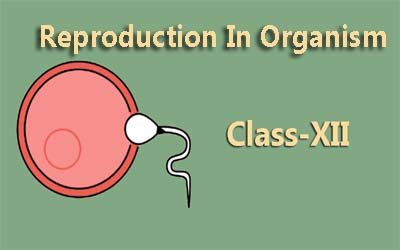Course description
The Anatomy of Flowering Plants unit in Class 11 Biology ventures beyond the surface, taking you on a microscopic journey to explore the intricate world within. Here, you'll dissect the building blocks of plants – their tissues – and understand how they orchestrate the magic of life.
This course overview unveils the fascinating inner workings of flowering plants:
The Fabric of Plants: Tissues: This section lays the groundwork by introducing the concept of tissues, the fundamental building blocks of plants:
Meristematic Tissues: These are the tireless cell factories, continuously dividing and giving rise to other specialized tissues.
Permanent Tissues: These differentiated tissues take on specific functions, like transport, support, and storage. Here, you'll encounter key players like:
Xylem: The woody tissue responsible for transporting water and dissolved minerals upwards from the roots.
Phloem: The "sugar highway" that transports food (sugars) prepared in the leaves to other parts of the plant for growth and energy.
Epidermis: The outermost protective layer, often waxy to minimize water loss and sometimes housing structures like trichomes (hairs) for various functions.
Ground Tissues: This broad category encompasses various tissues with diverse functions, including parenchyma (for storage), collenchyma (for support), and sclerenchyma (for strength).
The Plant's Highway System: Vascular Bundles: This section delves into the intricate organization of tissues within the plant:
Vascular Bundles: Imagine a plant's circulatory system! These bundles contain both xylem and phloem tissues, arranged strategically for efficient transport of water, nutrients, and food throughout the plant body.
Dicot vs. Monocot Anatomy: You might explore the differences in vascular bundle arrangement between dicotyledonous (dicot) and monocotyledonous (monocot) plants, revealing fascinating adaptations.
Specialized Tissues and Adaptations: This section explores some unique tissues with specific functions:
Secretory Tissues: Produce and secrete various substances like essential oils, resins, and digestive enzymes.
Aerenchyma: Special tissue with air spaces, often found in aquatic plants to facilitate gas exchange.
Beyond these core concepts, your course might explore:
Plant Cell Structure: Gain a deeper understanding of the basic building block of a plant cell, including its organelles and their functions.
Secondary Growth: Some plants undergo secondary growth, thickening their stems and roots with additional tissues. You might learn about the role of cambium in this process.
Plant Tissue Systems: Explore how different tissues are grouped based on their structure and function, forming tissue systems like the dermal tissue system (epidermis) and the vascular tissue system (xylem and phloem).
ক্লাস 11 জীববিজ্ঞানের এনাটমি অফ ফ্লাওয়ারিং প্ল্যান্টস ইউনিট পৃষ্ঠের বাইরে উদ্যোগ নেয়, যা আপনাকে একটি মাইক্রোস্কোপিক যাত্রায় নিয়ে যায় ভিতরের জটিল বিশ্ব অন্বেষণ করতে। এখানে, আপনি উদ্ভিদের বিল্ডিং ব্লকগুলি-তাদের টিস্যুগুলি-বিচ্ছিন্ন করবেন এবং বুঝতে পারবেন যে তারা কীভাবে জীবনের জাদু পরিচালনা করে।
এই কোর্সের সংক্ষিপ্ত বিবরণটি সপুষ্পক উদ্ভিদের আকর্ষণীয় অভ্যন্তরীণ কার্যকারিতা প্রকাশ করেঃ
উদ্ভিদের কাপড়ঃ টিস্যুঃ এই বিভাগটি উদ্ভিদের মৌলিক বিল্ডিং ব্লক টিস্যু ধারণার প্রবর্তন করে ভিত্তি স্থাপন করেঃ
মেরিস্টেমেটিক টিস্যুঃ এগুলি হল অক্লান্ত কোষ কারখানা, যা ক্রমাগত বিভক্ত হয় এবং অন্যান্য বিশেষ টিস্যু তৈরি করে।
স্থায়ী টিস্যুঃ এই পৃথক টিস্যুগুলি পরিবহন, সমর্থন এবং সংরক্ষণের মতো নির্দিষ্ট কাজ করে। এখানে, আপনি প্রধান খেলোয়াড়দের মুখোমুখি হবেন যেমনঃ
জাইলমঃ কাঠের টিস্যু যা জল এবং দ্রবীভূত খনিজগুলি শিকড় থেকে উপরের দিকে পরিবহনের জন্য দায়ী।
ফ্লোয়েমঃ "সুগার হাইওয়ে" যা পাতায় প্রস্তুত খাবার (চিনি) বৃদ্ধি এবং শক্তির জন্য উদ্ভিদের অন্যান্য অংশে পরিবহন করে।
এপিডার্মিসঃ সবচেয়ে বাইরের প্রতিরক্ষামূলক স্তর, প্রায়শই জলের ক্ষয় হ্রাস করতে মোমের মতো এবং কখনও কখনও বিভিন্ন কাজের জন্য ট্রাইকোম (চুল) এর মতো আবাসন কাঠামো।
গ্রাউন্ড টিস্যুঃ এই বিস্তৃত বিভাগটি বিভিন্ন ফাংশন সহ বিভিন্ন টিস্যুকে অন্তর্ভুক্ত করে, যার মধ্যে রয়েছে প্যারেনকাইমা (সংরক্ষণের জন্য) কোলেনকাইমা (সহায়তার জন্য) এবং স্ক্লেরেনকাইমা। (for strength).
কারখানার মহাসড়ক ব্যবস্থাঃ ভাস্কুলার বান্ডেলঃ এই বিভাগটি উদ্ভিদের মধ্যে টিস্যুগুলির জটিল সংগঠনের উপর আলোকপাত করেঃ
ভাস্কুলার বান্ডলঃ একটি উদ্ভিদের সংবহনতন্ত্রের কথা কল্পনা করুন! এই বান্ডিলগুলিতে জাইলেম এবং ফ্লোয়েম উভয় টিস্যুই থাকে, যা উদ্ভিদের সারা শরীর জুড়ে জল, পুষ্টি এবং খাদ্যের দক্ষ পরিবহনের জন্য কৌশলগতভাবে সাজানো হয়।
ডিকট বনাম মনোকোট অ্যানাটমিঃ আপনি ডাইকোটাইলডোনস (ডিকট) এবং মনোকোটাইলডোনস (মনোকোট) উদ্ভিদের মধ্যে ভাস্কুলার বান্ডিল বিন্যাসের পার্থক্যগুলি অন্বেষণ করতে পারেন, যা আকর্ষণীয় অভিযোজন প্রকাশ করে।
বিশেষায়িত টিস্যু এবং অভিযোজনঃ এই বিভাগটি নির্দিষ্ট ফাংশন সহ কিছু অনন্য টিস্যু অন্বেষণ করেঃ
সিক্রেটরি টিস্যুঃ সুগন্ধী তেল, রজন এবং পাচক উৎসেচকের মতো বিভিন্ন পদার্থ উৎপাদন ও নিঃসরণ করে।
অ্যারেনকাইমাঃ বায়ু স্থান সহ বিশেষ টিস্যু, যা প্রায়শই জলজ উদ্ভিদে পাওয়া যায় যাতে গ্যাস বিনিময় সহজ হয়।
এই মূল ধারণাগুলির বাইরে, আপনার কোর্সটি অন্বেষণ করতে পারেঃ
উদ্ভিদ কোষের কাঠামোঃ উদ্ভিদ কোষের মৌলিক গঠন সম্পর্কে গভীর ধারণা অর্জন করুন, যার মধ্যে এর অঙ্গকোষ এবং তাদের কার্যকারিতা রয়েছে।
গৌণ বৃদ্ধিঃ কিছু উদ্ভিদ গৌণ বৃদ্ধির মধ্য দিয়ে যায়, অতিরিক্ত টিস্যু দিয়ে তাদের কান্ড এবং শিকড়কে ঘন করে তোলে। আপনি এই প্রক্রিয়ায় ক্যাম্বিয়ামের ভূমিকা সম্পর্কে জানতে পারেন।
উদ্ভিদ টিস্যু সিস্টেমঃ ত্বকের টিস্যু সিস্টেম (এপিডার্মিস) এবং ভাস্কুলার টিস্যু সিস্টেমের মতো টিস্যু সিস্টেম গঠন করে কীভাবে বিভিন্ন টিস্যু তাদের কাঠামো এবং কার্যকারিতার উপর ভিত্তি করে গোষ্ঠীভুক্ত করা হয় তা অন্বেষণ করুন। (xylem and phloem).



















